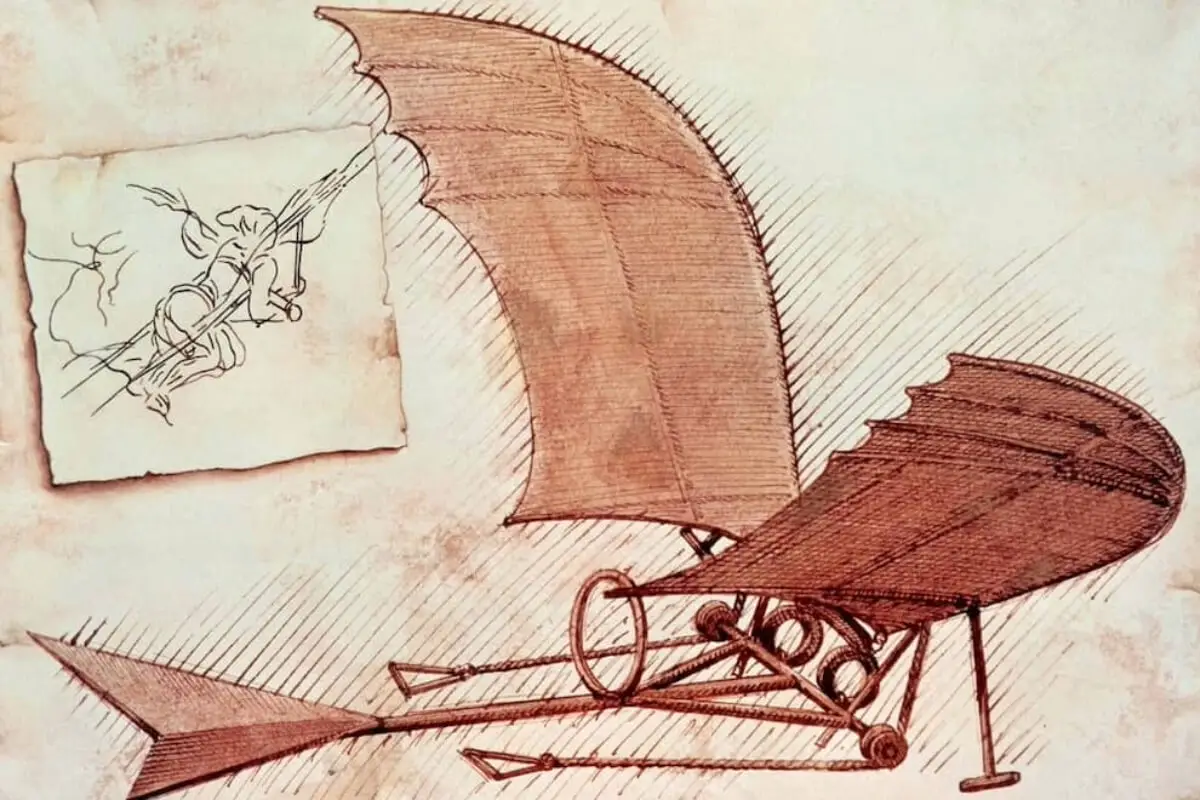The polymathic genius of Leonardo da Vinci finds one of its most profound expressions in the conception of a flying machine — a testament to his artistic mastery mated with technical virtuosity. Over 500 years ago, da Vinci envisioned a contraption that could ascend above the terrestrial limits, inspired by the sublime beauty of avian flight interspersed with the fluttering flamboyance of bats.
His adept interpretation of nature’s flight dynamics, combined with a triumphant blend of creative instincts and enlightened scientific thought, breathed life into a concept so advanced for his epoch yet so grounding for the futuristic advancements in aeronautics.
Table of Contents
- The Concept of Da Vinci’s Flying Machine
- Design and Functioning of Da Vinci’s Flying Machine
- Influence of Da Vinci’s Flying Machine on Modern Aeronautics
- Related Questions
The Concept of Da Vinci’s Flying Machine
Leonardo Da Vinci’s Magnificent Obsession: The Concept of Flight
Humanity’s fascination with flight isn’t a modern phenomenon. Still, it can be traced back centuries, and no story on this subject would be complete without delving into the ingenious mind of the Renaissance master Leonardo da Vinci.
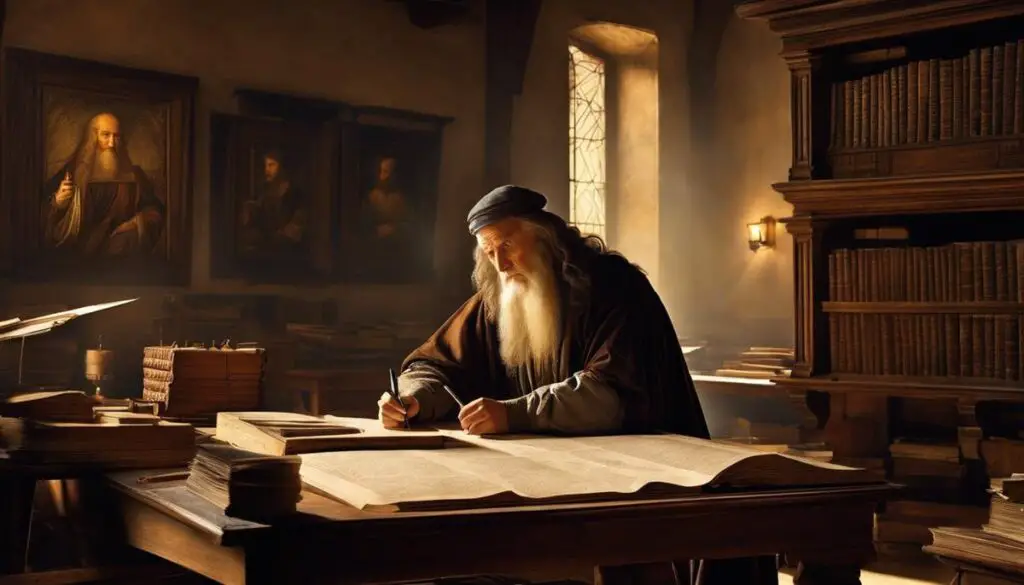
Best known for painting the ‘Mona Lisa’ and ‘The Last Supper,’ da Vinci’s interests spanned multiple disciplines, and his fascination with human flight led to the conception of the spectacular “flying machine.
At its core, decoding Leonardo da Vinci’s flying machine is unraveling the sculptor’s profound understanding and respect for nature. Known for his habit of careful observation and meticulous documentation, da Vinci was inspired by the avian life around him.
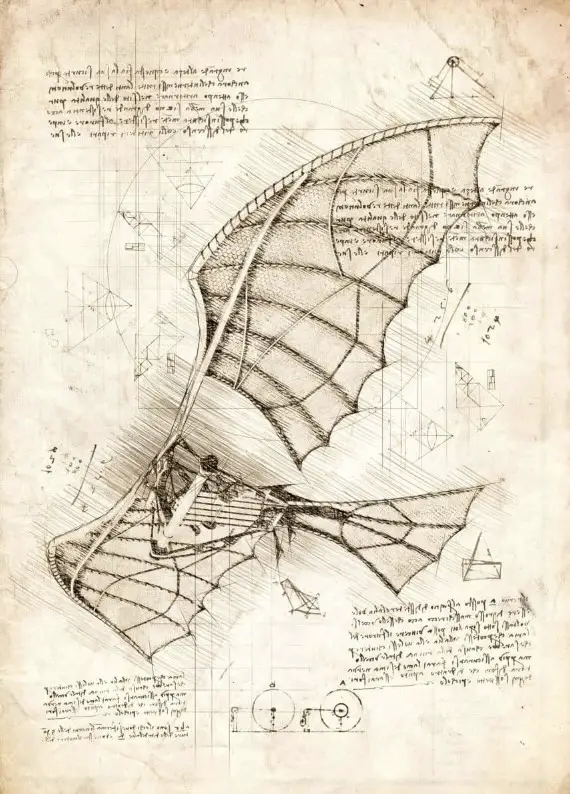
By analyzing birds’ anatomy and flight patterns, he wanted to replicate these mechanics in a human-operated flying device. Thus, one can argue that da Vinci’s conception of the flying machine is evidence of Biomimicry, the design of products, systems, or structures that imitate nature’s models.
One among the 500 inventions brimming in the artist’s notebooks, da Vinci’s flying machine, or “ornithopter,” is a sight to behold. First imagined around 1485, the design implies a lightweight frame to which a pair of enormous wings is attached, spanned by taut fabric.
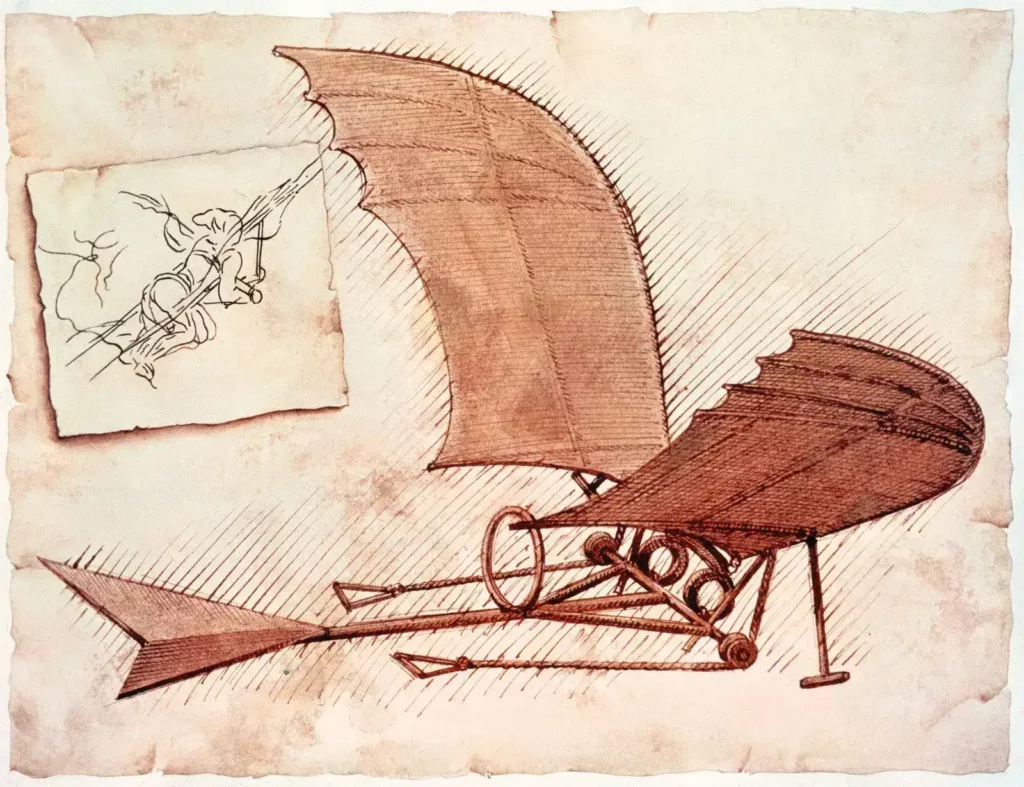
The pilot would lie flat in the central section and power the apparatus with a hand crank, causing the wings to flap. This design is a tribute to da Vinci’s study of Bat’s flight, harmoniously converging art and science.
It’s essential to note that Leonardo Da Vinci’s flying machine was not strictly an invention but a concept, an exploration. Considering the technological limitations of the 15th century, the practical implementation of da Vinci’s designs was nigh impossible. The sketches bear testament to flights of fancy indulged by an audacious polymath artist rather than blueprints for a working model.
Simultaneously, while the “ornithopter” may never have left the ground during Leonardo’s lifetime, they greatly influenced scientific and philosophical discussion. By committing the power of his observations into systematic designs, da Vinci elevated the conception of human flight from an implausible fantasy into the realm of possibility, thus laying the groundwork for future aviation innovations.
Leonardo da Vinci’s flying machine transcends the physical embodiment of an invention. It reflects an aspect of the Renaissance spirit – the insatiable curiosity and audacious brainstorming of an era that dared to push humanity’s boundaries.
More importantly, it showcases the genius of an individual who was unrestrained by the limitations of his time, pressing ever forward in his quest to mimic and master the art of flight. In this sense, Leonardo da Vinci’s flying machine is more than a conduit for movement – it symbolizes humanity’s relentless quest to conquer the skies, embodying the belief that nothing is beyond the reach of a diligent and resourceful mind.
Design and Functioning of Da Vinci’s Flying Machine
Turning our attention to Leonardo da Vinci’s flying machine, it’s essential to understand that he sought inspiration from the most highly evolved aeronauts – birds.
Just as bats and birds utilize their wings’ skin surface to achieve lift, Leonardo da Vinci’s flying machine was designed to use a similar concept of using surface area to rise. It was grounded primarily on the principle of Biomimicry, a practice of designing systems modeled on natural biological elements.
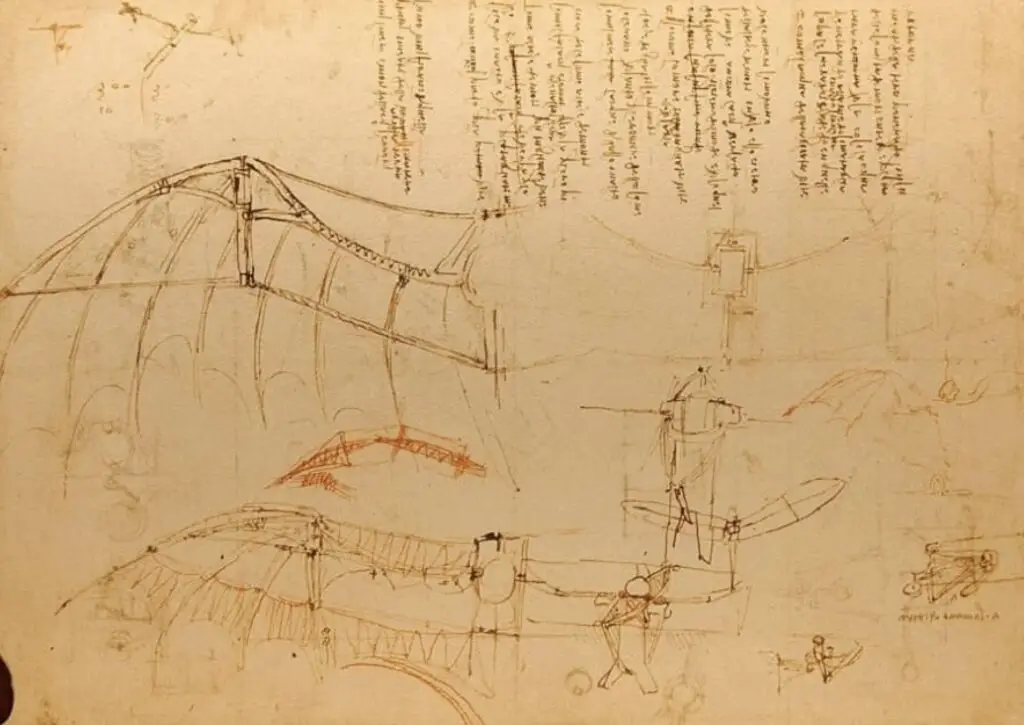
This flying machine, known as the “ornithopter,” resembles a giant bird in design and mechanism. Leonardo da Vinci designed this flying machine with wings extending outwards, much like a bird’s wings.
His meticulous observations and studies of bird flights led him to conclude that humans could, theoretically, exploit the same principles that allow birds to soar across the sky. One of his many fascinating codices even includes comprehensive sketches of birds in flight!
Da Vinci’s flying machine was designed with large, bat-like wings meant to be flapped by the pilot. A rope ran from a crank mechanism to the wing’s top surface, and as the pilot turned the crank, the wings would flap. Important to note, however, is that he designed his machine to flap downwards more forcefully than upwards—mimicking the movement of a crow in flight.
This rigorously thought-out design was meant to provide propulsion and, in combination with the surface area of the wings, the necessary lift. While da Vinci didn’t incorporate a machine steering method, the concept of controlled flight was well-represented in the detailed designs.
Unfortunately, Leonardo da Vinci’s flying machine was far beyond his time’s technological capabilities. Given available lift generation, the materials available could not construct a contraption light enough to allow for flight. Also, the human strength required to power such a machine exceeded that of even the fittest individuals. However, da Vinci’s theoretical principles hold remarkably well to the modern understanding of aerodynamics, and his invention played an instrumental role in shaping flight technology centuries later.
In conclusion, the design and supposed function of Da Vinci’s flying machine is an unsung testimony to his genius and breadth of understanding. It carries with it centuries of humanity’s dreams of flight.
Even within its technological constraints and mechanical limitations, Leonardo Da Vinci’s flying machine echoes an eternal truth: The objective may sometimes be out of reach, but the path toward it constantly expands our capacity for understanding and creativity.
Influence of Da Vinci’s Flying Machine on Modern Aeronautics
Transitioning from an initial picture into the overarching influence of Leonardo da Vinci’s flying machine on modern aerodynamics and the design of aircraft, it seems pertinent to underline his profound impact on our world.
It was not merely the idea of flight that made Leonardo’s designs ahead of their time but also his understanding of the underlying principles. His observations and the resulting designs, albeit rudimentary, symbolize an uncanny resemblance with advancements made much later in the field of aviation.

Borrowing from nature, Leonardo’s vision was to create a flapping machine akin to a bird, termed an “ornithopter.” Somewhat prophetically, da Vinci’s sketches transcend the epochal limitations and incorporate scientific principles acknowledged today. Key among these aspects is the idea of lift, which is essential to the construction and functionality of modern aircraft.
In his design, Da Vinci uses an expansive surface area for the wings, similar to actual birds. This is strikingly similar to how modern wing design capitalizes on the wings’ broad surface area, which maximizes the air pressure difference above and below the wings, providing the lift needed for flight – a principle known as Bernoulli’s.
Another striking aspect is the flapping mechanism enlisted by da Vinci’s designs. Albeit used for an ornithopter, uncannily, the motion of pistons in a modern aircraft engine mirrors this flapping. The repeated up-down motion creates higher pressure on the bottom side, thus generating lift, a key component in the flight of both birds and planes.
Interestingly, the absence of a transparent steering system in da Vinci’s machine underscores the nuances of flight control, eluding engineers until the development of control surfaces, such as ailerons, elevators, and rudders. But had the technology been advanced enough during his time, there’s little doubt that da Vinci’s keen observation and understanding of nature’s manner of flight would have also led him to a form of flight control mechanism.
However, the technological barricades of the 15th century undermined da Vinci’s ability to bring his theoretical contemplations to fruition. Yet, these visionary designs spurred ingenuity and fostered the development of human flight, thereby influencing generations of innovators and inventors in the realm of aerodynamics and aircraft design.
In essence, Leonardo da Vinci’s flying machine serves as a testament to inception, a symbol of ingenuity, of taking lessons from nature and applying them meticulously. Regardless of its inability to actualize during his lifetime, it resonates vividly with subsequent aviation breakthroughs.
Undoubtedly, Leonardo da Vinci’s fundamental groundwork, pioneering spirit, and relentless curiosity fueled flight trajectories, challenging the human spirit, shaping the canvas of aerodynamics, and providing pivots for modern aircraft design. This embodies the genius of da Vinci, reflecting his far-reaching grasp and an unmistakable testament to his profound influence on the tapestry of modern flight.
A meticulous examination of da Vinci’s flying machine design, intricacies, and operations reveals a precursor to modern air navigation systems borne out of timeless art and science.
Leonardo da Vinci, the Italian Renaissance genius, unwittingly became the architect of aviation’s future, setting the blueprint for innovative leaps in the field — his principles and visionary perspectives guiding the evolution of manned airborne voyages.
As we dissect the implications of his design in today’s aeronautics, it is evident that the concept transcends the lens of antiquity, establishing itself as a timeless testament to the human spirit, ingenuity, and an overwhelming desire to conquer the skies.
Anita Louise Art is dedicated to art education, great artists, and inspiring others to find and create their art. We love art that uplifts and inspires. #ArtToMakeYouSmile! #ArtToMakeYouHappy!
If you are interested to see any of my art, you can find out more by clicking here. If you are interested in what inspires me and my paintings, you can discover more by clicking here.
We have a free newsletter and would love you to be part of our community; you can subscribe to the newsletter by clicking here. If you have any questions, I would be happy to talk to you anytime. You can reach me, Anita, by clicking here.
Subscribe to our Anita Louise Art YouTube Channel with great videos and information by clicking here.
Join us for our podcast “5 Minutes With Art.” Spend just 5 minutes a week with us to discover and learn about great art and artists. You can find out more about our podcast by clicking here.
Related Questions
What Art Tools Did Vincent Van Gogh Use?
Vincent Van Gogh used most of the essential tools that artists of his day used, such as oil paints, turpentine, oil, canvas, brushes, palette knife, and easel. We learn from some of his letters how he used these art tools for his paintings. We also know from the letters how essential these art tools were to him.
By clicking here, you can learn more by reading What Art Tools Did Vincent Van Gogh Use?
Impressionism And The Influence Of Japonisme
The word Japonisme was used to describe the influence of Japanese art on Impressionism art. The Impressionism artists would study Japanese art and then incorporate parts of the Japanese art techniques and inspiration into their art. Japanese art influenced artists like Claude Monet, Vincent Van Gogh, Edouard Manet, Mary Cassatt, Edgar Degas, Paul Gauguin, James McNeill Whistler, and Henri de Toulouse-Lautrec.
By clicking here, you can learn more by reading Impressionism And The Influence Of Japonisme.
Why Did Leonardo da Vinci Become An Artist?
We do not know why Leonardo da Vinci became an artist, but we do know that he was very talented and showed a disposition to the arts, even from a very young age. We also know his father helped him get into an art studio to be trained under Andrea del Verrocchio, a well-known artist in Florence, Italy.
By clicking here, you can learn more by reading Why Did Leonardo da Vinci Become An Artist?

